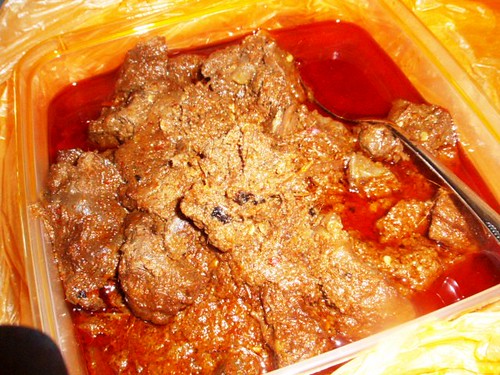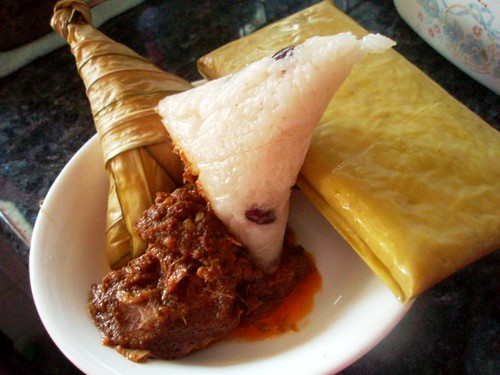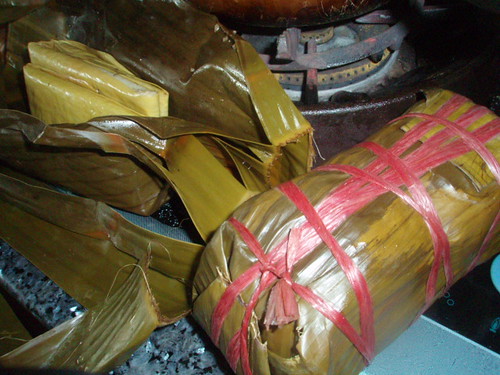This stall is located inside SMART market in JB.

beef rendang
100 grams of beef rendang cost RM4.
1 piece of rendang ayam-kampung (free-range chicken) cost RM5.
1 piece of the mutton rendang cost RM 5 (I think.. I kinda forgot the price for this).
The chicken & mutton was charged by pieces because they include the bones. It wouldn't have been fair to charge by mass.
My mum bought like 2.2kg of the beef rendang, which set us back RM88. And 5 big pieces of the free-range chicken.

kampung chicken rendang
There are 2 types of free-range chickens that are used for cooking rendang.
Free-range chicken are essential in making rendang, for in making this dish, it has to sit over the fire for hours at end. The longer the better, for the flavours from the spices would have seeped and be absorbed into the chicken meat. Using free-ranges chickens ensure that the meat will still remain intact. Normal chicken meat would have turned to mush by then.
The really popular but not-so-common ones are the ones that used 'ayam pencen' (retired chicken - really aged). The meat of these chicken are really tough and suitable for 'dry' rendang when the amount of time spent over the fire is much longer.
Thing is though, there are more bones than meat... And the chicken skin was so tough, it reminds me of leather. =(

festive eats
On that small plate is a piece of the beef rendang. The triangular things are ketupat/lepat daun palas (peeled & unpeeled) & the rectangular piece is a burasak.
Ketupat daun palas hailed from the Northern states of Malaysia like Kedah, Penang & Perlis. Reason why I also called this 'lepat' is because they used glutinous rice, unlike normal rice for regular ketupats.
And like the ones I bought here, they even put in black beans, like the regular lepat. Ok, for those unknowing, lepat is actually glutinous rice wrapped with a coconut leaf. They usually have a small amount of legumes like soy or black beans inside.

Burasak
Meanwhile, 'Burasak' is a well-known speciality of the Bugis people.
Last Raya, my mum had purchased some Burasak from a lady whose daughter-in-law is of Bugis origin. What she bought was actually glutinous rice mixed in coconut milk and wrapped in young banana leaf.
This one however, we were told that it's regular rice that's mixed in coconut milk, akin to nasi lemak, but in lontong form. We were curious by that fact and purchased a couple of these.

Inside the outer layer - see the colour contrast?
We were pleasantly surprised by the effort taken to prepare this. The outer layer was the regular banana leaf.
Unwrapping that outer layer, we were greeted by 5 individual packages, with each parcel neatly wrapped in very young banana leaves. My mum told me that going by the colour, they might have used the innermost leaf of the banana tree.
And the taste... wow! Very fragrant and true enough, it DOES taste like nasi lemak, albeit in lontong form!
No comments:
Post a Comment